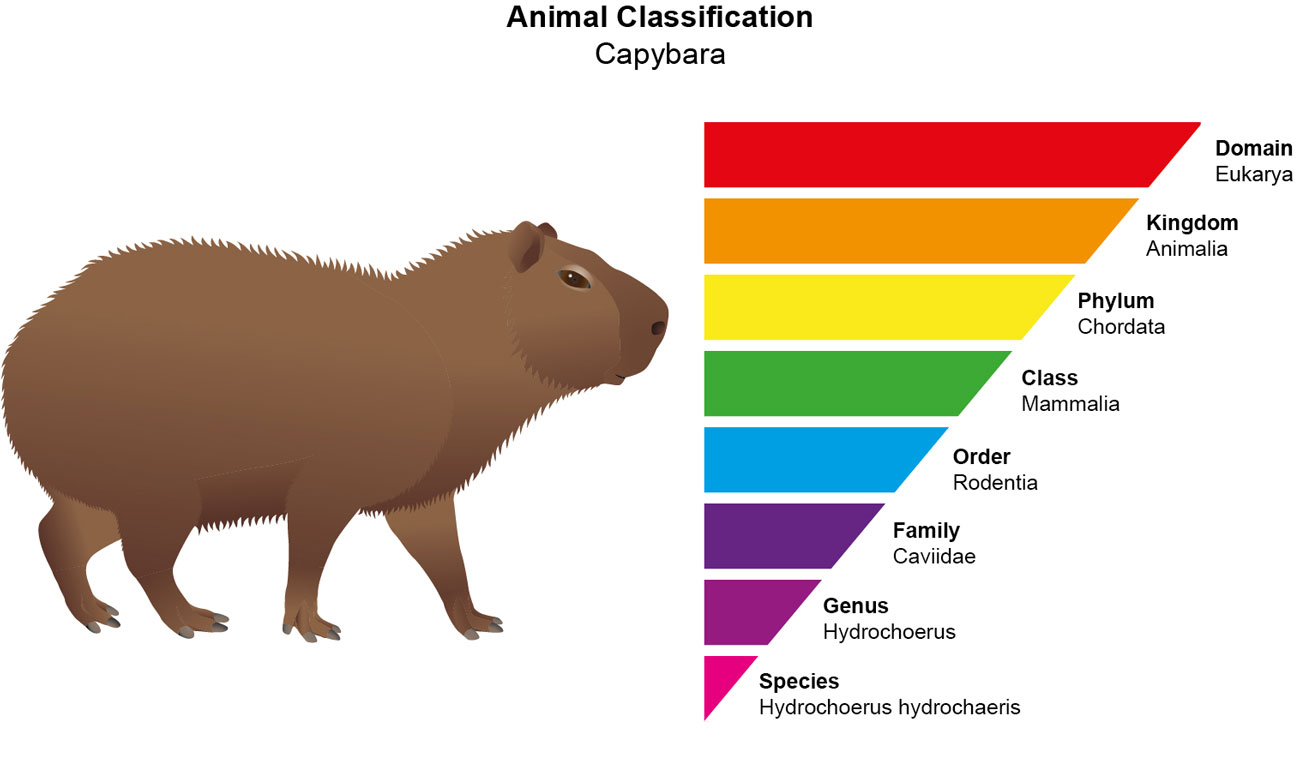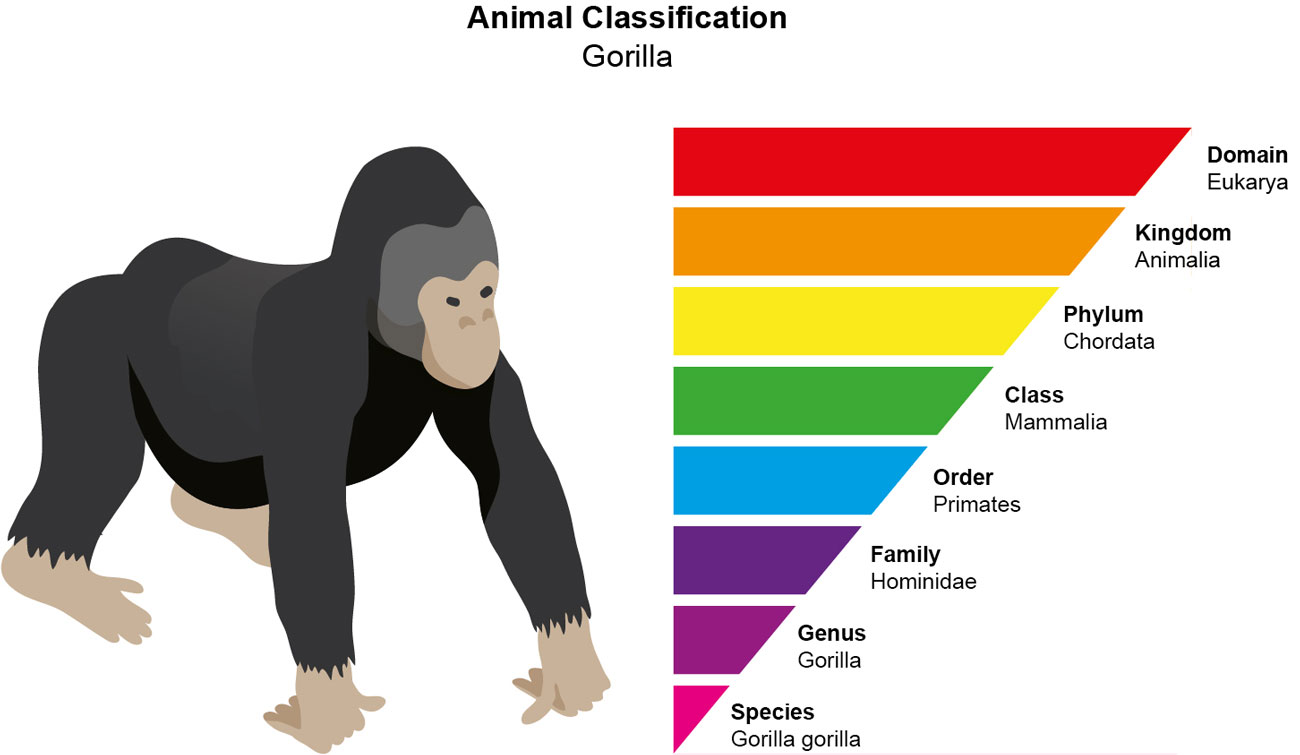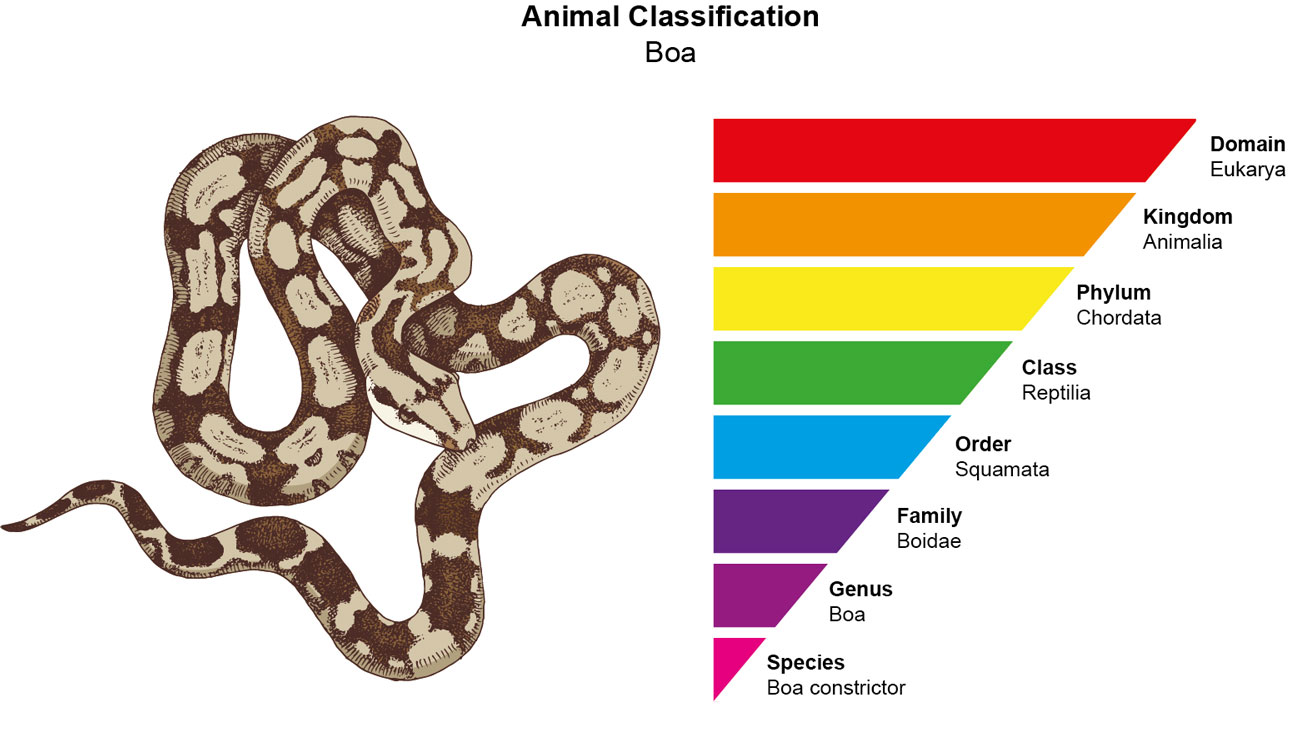Do All Animals Within The Ovine Classification Have Wool?
Did you know that in that location are over 1.5 million unlike species of animals on this planet? That's a lot of creatures!
Information technology tin be difficult to keep track of them all, particularly when they all fall into dissimilar classification categories. In this article, nosotros will hash out the different ways animals can be classified, as well every bit provide a comprehensive guide to scientific classification for animals.
What is Scientific Classification?
Scientific classification (or taxonomy) is the procedure of grouping animals into different categories. These categories are based on similarities or shared characteristics, such as diet (carnivore, plant eater etc.), habitat, anatomy, or behavior. Scientists use fauna classification to assist them study and understand the natural world.
This system of classification was developed past Swedish botanist Carl Linnaeus during the 1700s. The Linnaeus Method, also known as Linnaean Taxonomy, creates a bureaucracy of groupings called taxa, as well as binomial nomenclature that gives each creature species a two-word scientific name. The offset word in the name is the genus, which is a general grouping of animals with similar characteristics. The 2nd word is the specific proper name, which is used to place a particular species within the genus.
The method of giving scientific names to animals is typically rooted in Latin by combining the genus and species. For example, caribou are classified every bit Rangifer tarandus while polar bears are Ursus maritimus.
The Linnaean system of animal classification has changed and evolved as our agreement of the natural globe has grown. In the early on 1800s, French biologist Georges Cuvier adult the concept of extinction, which led to a major revision of Linnaean taxonomy. In the 1900s, High german zoologist Ernst Mayr defined species as groups of animals that can interbreed and produce viable offspring. This definition is however used today.
The more features that a grouping of animals shares, the more specific that animal classification group is. Every species is divers based on nine branching categories.
The method of scientific nomenclature is:
- Domain
- Kingdom
- Phylum
- Grade
- Society
- Suborder
- Animal Families
- Genus
- Species
The Vi Kingdoms
When Linnaeus adult his organisation of nomenclature, in that location were only two kingdoms, Plants and Animals. But the invention of the microscope led to the discovery of new organisms and the identification of differences in animal and plant cells. A two-kingdom system was no longer useful.
Today the system of classification includes vi kingdoms.
- Plants
- Animals
- Protists
- Fungi
- Archaebacteria
- Eubacteria
How are organism placed into their kingdoms?
- Cell type, complex or simple
- Their ability to make food
- The number of cells in their body
Plants
You are probably quite familiar with the members of this kingdom as it contains all the plants that you have come to know – flowering plants, mosses, and ferns. Plants are all multicellular and consist of complex cells.
- In addition, plants are autotrophs, organisms that make their own nutrient.
- With over 250,000 species, the institute kingdom is the second largest kingdom.
- Institute species range from the tiny greenish mosses to giant trees.
- Without plants, life on World would not exist!
- Plants feed nearly all the heterotrophs (organisms that swallow other organisms) on Globe.
Animals
The animal kingdom is the largest kingdom with over one million known species. All animals consist of many complex cells. They are too heterotrophs. Members of the animal kingdom are establish in the nearly diverse environments in the world.
Archaebacteria
In 1983, scientists tool samples from a spot deep in the Pacific Ocean where hot gases and molten stone boiled into the bounding main form the Earth'due south interior. To their surprise they discovered unicellular (one prison cell) organisms in the samples. These organisms are today classified in the kingdom, Archaebacteria.
Archaebacteria are found in extreme environments such as hot boiling water and thermal vents nether conditions with no oxygen or highly acrid environments. The hot springs of Yellowstone National Park, USA, were among the start places Archaebacteria were discovered.
Eubacteria
Similar archaebacteria, eubacteria are complex and single celled. Nearly bacteria are in the EUBACTERIA kingdom. They are the kinds found everywhere and are the ones people are most familiar with. Eubacteria are classified in their own kingdom considering their chemical makeup is different. About eubacteria are helpful. Some produce vitamins and foods like yogurt. Withal, some eubacteria such every bit Streptococci tin can give y'all strep throat!
Fungi
Mushrooms, mold and mildew are all examples of organisms in the kingdom fungi. Most fungi are multicellular and consists of many complex cells. Fungi are organisms that biologists once confused with plants, however, unlike plants, fungi cannot make their own nutrient. Most obtain their food from parts of plants that are decaying in the soil.
Protists
Slime molds and algae are protists. Sometimes they are called the odds and ends kingdom considering its members are so different from i another. Protists include all microscopic organisms that are not bacteria, not animals, not plants and non fungi. Most protists are unicellular. You may be wondering why those protists are non classified in the Archaebacteria or Eubacteria kingdoms. Information technology is considering, unlike bacteria, protists are complex cells.
Creature Phylums Explained
The most mutual mode to classify animals is past their phyla, or major body plan. There are 35+ creature phylums or phyla. Here is a shortlist of the most mutual ones:
- Porifera – multi-celled simple bounding main creatures i.e. sponges
- Cnidaria – primarily marine animals including the corals, hydras, jellyfish, bounding main anemones, sea pens etc.
- Platyhelminthes – a group of soft-bodied, usually much flattened invertebrates i.east. flatworms
- Annelida – segmented worms; characterized by the possession of a body crenel, movable bristles, and a body divided into segments eastward.g. earthworms
- Mollusca – molluscs eastward.g. Sea slugs, squids, snails, and scallops
- Arthropoda – invertebrate animals with an exoskeleton, a segmented body, and paired jointed appendages. Near insects and arachnids east.thousand. tarantula
- Chordata – vertebrates such as mammals, fish, reptiles and birds. due east.grand. puffins
Animal Classes
There are seven main classes of animals:
- Agnatha (jawless fish) – group of primitive jawless fishes that includes the lamprey
- Chrondrichtyes (cartilaginous fish) – a major class of jawed fish whose skeleton is characterized past rubbery cartilage e.g. sharks
- Osteichthyes (bony fish) – diverse taxonomic group of fish that have skeletons primarily composed of os tissue
- Amphibia (amphibians) – small vertebrates that need water, or a moist environment, to survive.
- Reptilia (reptiles) – Cold-blooded vertebrates, lay eggs
- Aves (birds) – Warm-blooded vertebrates, lay eggs, feathers
- Mammalia (mammals) – Warm-blooded, give birth to live young, nurse their young with milk
Animal Orders
At present that we know the animal classes, let's move on to animal orders. This is where things start to get a little more specific. For example, all lizards are reptiles, merely non all reptiles are lizards.
There are effectually 35 orders of mammals and over l orders of reptiles. here are a few examples of each.
Mammals:
- Carnivora (e.k. crimson fox, grizzly bears, cherry panda) – carnivorous mammals
- Primates (due east.chiliad. Squirrel monkey, chimpanzee, lemurs)
- Rodentia (eastward.g. mice, squirrels) – rodents; gnawing mammals
- Ungulata (e.g. horses, llama, pigs) – hoofed mammals
Reptiles:
- Squamata (e.grand. rattlesnakes, lizards)
- Testudines (e.g. turtles, tortoises)
- Crocodilia (eastward.thousand. crocodiles, alligators, caimans)
Animal Families
Now we're getting even more specific. Animal families are groups of closely related animals within an order. For example, the Felidae family includes all cats, from lions to house cats.
There are over 100 mammal families and over 200 reptile families. Here are a few examples of each:
Mammals:
- Canidae (canines) – e.g. dingos, wolves, jackals
- Felidae (felines) – east.g. jaguars, lions
- Bovidae (ruminants) – e.thou. bison, gazelle
- Ursidae (bears) e.g. polar bear, spectacled bear
Reptiles:
- Viperidae (snakes)
- Testudinidae (turtles)
- Alligatoridae (alligators, caimans)
- Crocodylidae (crocodiles)
Animal Genus Types
We've covered animal families, let's move on to animal genus types. A genus is a grouping of closely related animals within a family unit. For example, the Panthera genus includes all cats that can roar, such equally lions, tigers, and jaguars.
In that location are over 100 mammal genera and over 200 reptile genera.
Here are a few examples of each:
Mammals:
- Panthera (e.g. lions, tigers, jaguars) – large cats that roar
- Canis (e.g. dogs, coyotes, foxes)
- Bos (e.g. cattle)
- Ovis (e.g. sheep)
Reptiles:
- Python (e.g. pythons)
- Chelonoidis (east.grand. turtles)
- Alligator (e.thou. alligators)
- Crocodylus (e.grand crocodiles)
Animal Species
Finally, nosotros've arrived at animal species. A species is a group of animals that can mate and produce fertile offspring. For instance, lions and tigers are two different species of Panthera.
In that location are over 5000 mammal species and over 9000 reptile species. Here are a few examples of each:
Mammals:
- Lion (lion)
- Panthera tigris (tiger)
- Bos taurus (cattle)
- Ovis aries (sheep)
Reptiles:
- Python regius (royal python)
- Chelonoidis nigra (black turtle)
- Alligator mississippiensis (American alligator)
- Crocodylus niloticus (Nile crocodile)
Animal Scientific Classification Chart Example one – Capybara

- Phylum: Chordata (Vertebrate)
- Course: Mammalia (Mammal)
- Order: Rodentia (rodent)
- Family: Caviidae
- Genus: Hydrochoerus
- Species: Hydrochoerus hydrochaeris (Capybara)
Brute Scientific Classification Chart Example two – Gorilla

- Kingdom: Animalia (Animal)
- Phylum: Chordata (Vertebrate)
- Class: Mammalia (Mammal)
- Social club: Primates
- Family unit: Hominidae (Swell Apes)
- Genus: Gorilla
- Species: Gorilla gorilla (Gorilla)
Beast Scientific Classification Nautical chart Instance three – Boa Constrictor

- Kingdom: Animalia (Brute)
- Phylum: Chordata (Vertebrate)
- Class: Reptilia (Reptiles)
- Order: Squamata
- Family: Boidae
- Genus: Boa
- Species: Boa constrictor
Source: https://animalcorner.org/classification/
Posted by: jacobssquill1950.blogspot.com

0 Response to "Do All Animals Within The Ovine Classification Have Wool?"
Post a Comment